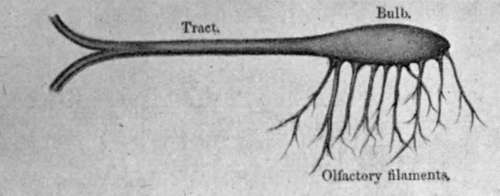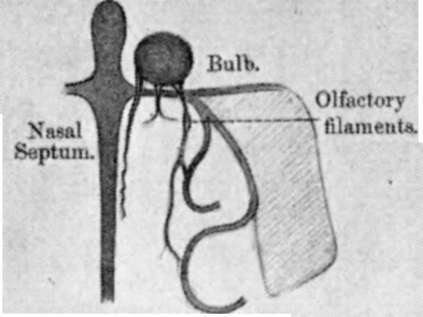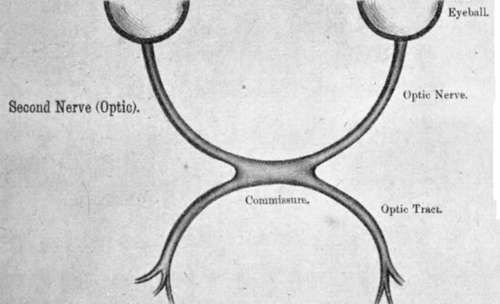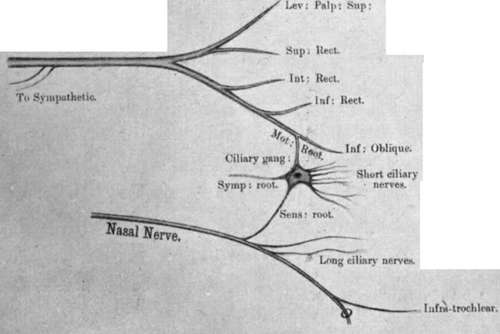Third Or Oculo Motor Nerve
Description
This section is from the book "Nerves Of The Human Body", by Charles R. Whittaker. Also available from Amazon: Hughes Nerves Of The Human Body.
Third Or Oculo Motor Nerve
Deep Origin
From the grey matter of the aqueduct of Sylvius (aquaeductus cerebri).
Superficial Origin
The nerve emerges on the medial side of the crus cerebri (cerebral peduncle) immediately anterior to the pons.
Course
From its superficial origin the nerve passes forwards between the posterior cerebral and superior cerebellar arteries to pierce the dura mater close to the posterior clinoid process. It next traverses the lateral wall of the cavernous sinus, and enters the orbit through the sphenoidal (superior orbital) fissure by passing between the two heads of the lateral rectus. In the orbit it supplies all the muscles, except the superior oblique and lateral rectus. As it lies in the sphenoidal fissure, the oculo-motor divides into two parts which are separated by the nasal (naso-ciliary) nerve. The upper portion supplies the superior rectus and levator palpebrae superioris, while the inferior division innervates the inferior rectus, medial rectus, and inferior oblique. This latter branch furnishes the motor root to the ciliary ganglion.
Plate I. First Nerve (Olfactory)



Third Nerve (Oculo-Motor)

Fourth Nerve (Trochlear)

Sixth Nerve (Abducens)

Communications
As the third nerve lies in the lateral wall of the cavernous sinus, it is connected with the cavernous sympathetic plexus. It also receives a minute twig from the ophthalmic division of the trigeminal.
Continue to:
